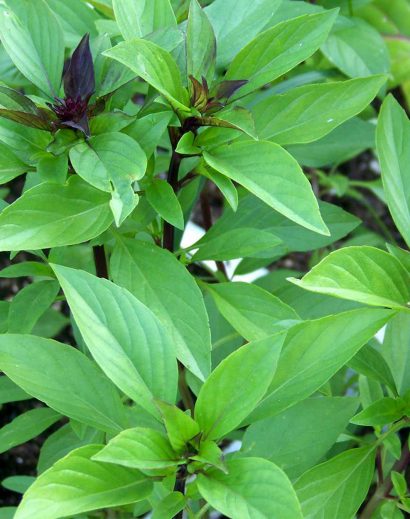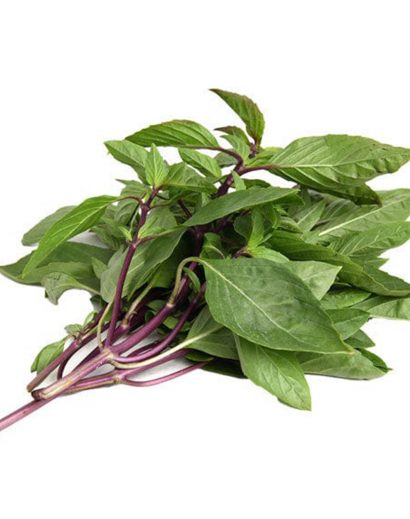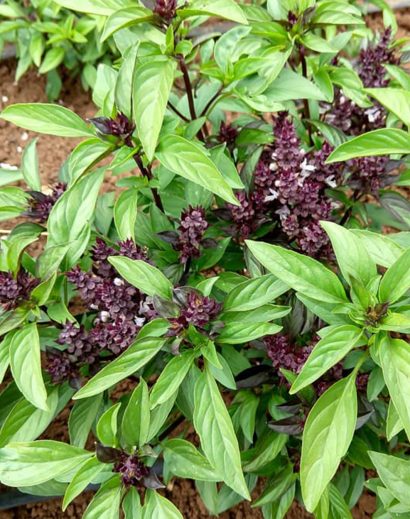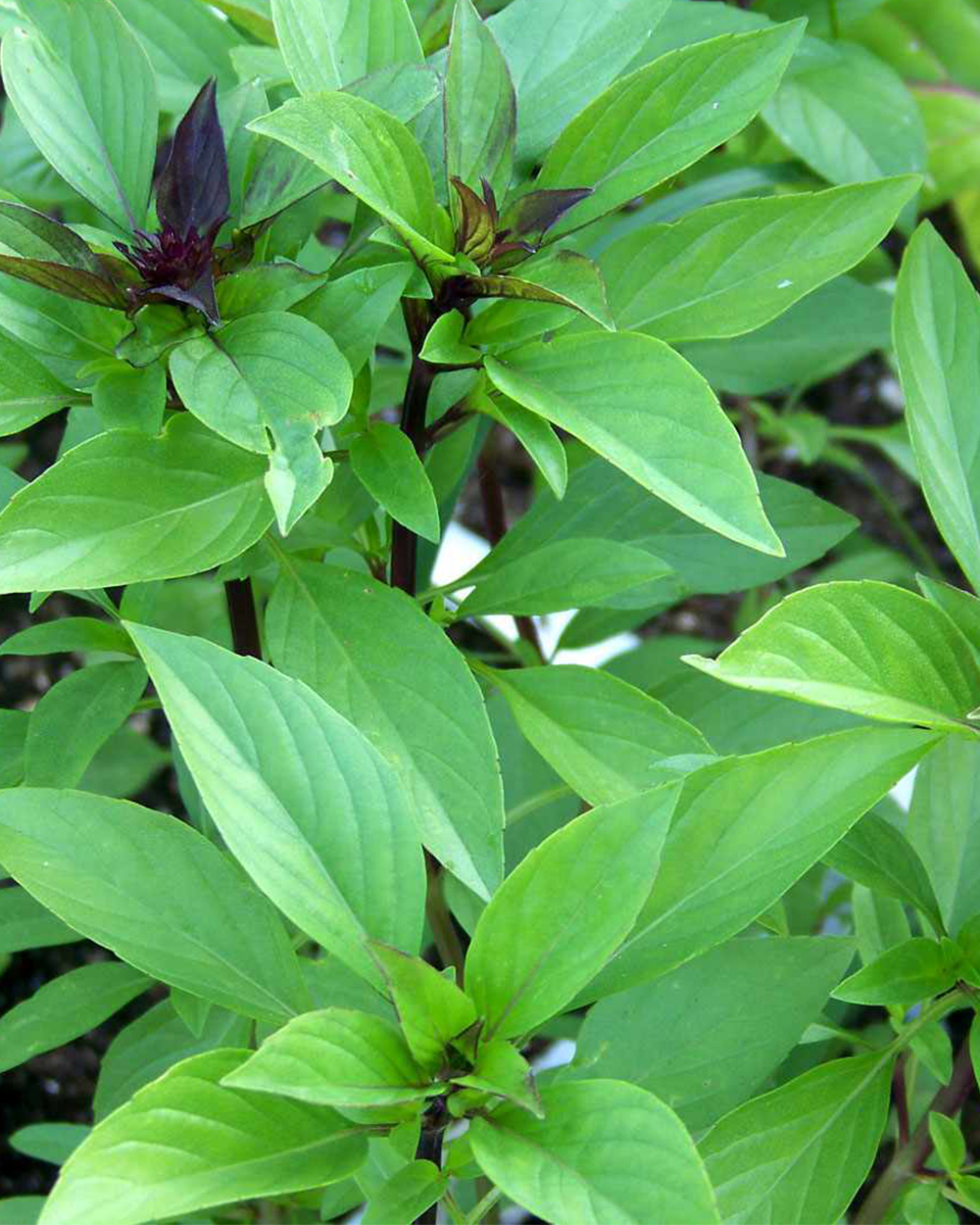Thai sweet basil, also known as “horapha” or “bai horapa” in Thai, is a popular herb used in Thai cuisine. It belongs to the basil family (Lamiaceae) and is known for its sweet, slightly spicy, and licorice-like flavor. Thai sweet basil is different from the more common Italian sweet basil (Ocimum basilicum) and has distinctive characteristics that make it a key ingredient in many Thai dishes.
Key features of Thai sweet basil:
- Flavor: Thai sweet basil has a sweet, anise-like flavor with a hint of peppery spiciness. Its flavor profile is unique and adds depth to Thai dishes.
- Appearance: The leaves of Thai sweet basil are medium to dark green, often slightly serrated, and have a shiny, smooth texture. They are typically smaller and more narrow than Italian basil leaves.
- Aroma: The leaves emit a fragrant and aromatic scent when crushed, which is a hallmark of basil varieties.
- Culinary Uses: Thai sweet basil is a staple in Thai cuisine and is used in various dishes, including curries, stir-fries, soups, and salads. It is often added at the last moment of cooking to preserve its fresh flavor and aroma.
- Popular Dishes: Some famous Thai dishes that prominently feature Thai sweet basil include Thai basil chicken (Pad Krapow Gai), Thai basil shrimp (Pad Krapow Goong), and green curry (Gaeng Keow Wan), among others.
- Thai sweet basil is a crucial ingredient in Thai cuisine, contributing to the unique and vibrant flavors that characterize Thai dishes. It is often used alongside other aromatic herbs like Thai holy basil (bai krapow) and cilantro to create a harmonious blend of flavors in Thai recipes.





Reviews
There are no reviews yet.